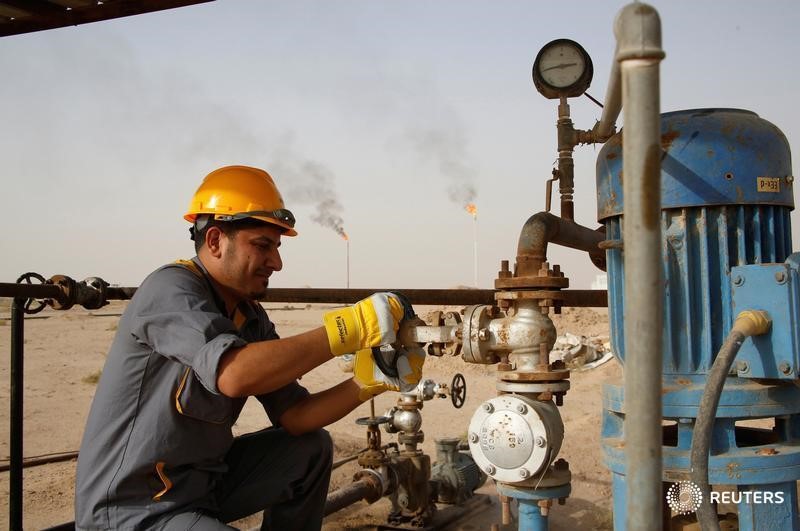
Investing.com — Oil prices notched a fourth-weekly despite settling lower Friday, as traders cheered signs earlier this week that usual pick in summer energy demand is underway at time when weather-related supply disruptions remain in focus.
At 14:30 ET (18:30 GMT), fell 1% to $86.54 a barrel, while fell 0.9% to $83.16 a barrel.
Crude prices were headed for a fourth week of strong gains, amid expectations that oil markets will tighten further in the coming months, although trading volumes were muted on account of the U.S. market holiday on Thursday.
Demand optimism in focus; Rig counts unchanged
U.S. travel demand in particular was a key source of this optimism, as analysts forecast record-high travel activity in the world’s biggest fuel consumer through the independence day week.
Bets on stronger demand were furthered by data showing a massive drawdown in U.S. over the past week, as fuel retailers prepared for holiday travel. This week is also expected to have seen sharp drawdowns in crude inventories.
On the supply front, meanwhile, the number of oil rigs remained at 479 from a week ago, Baker Hughes reported Friday. That is well below the 622 rig counts that were operating at the end of the last year, signaling no immediate rush from drillers to boost activity.
“Market sentiment has been supported this week by strong mobility indicators and intensifying geopolitical tension in the Middle East,” analysts at ANZ wrote in a note.
Persistent concerns over supply disruptions in the Middle East also saw traders attach a bigger risk premium to oil prices, as tensions between Israel and Lebanon’s Hezbollah showed little signs of easing.
OPEC oversupply, weak economic readings cool oil gains
But whether oil prices will push further remained doubtful, especially as recent data showed members of the Organization of Petroleum Exporting Countries had increased production in recent months, increasing the likelihood that markets become less tight later this year.
Concerns over slowing economic growth in major oil consumers the U.S. and China also remained in play, especially following weak readings on non-manufacturing purchasing managers index data.
Hawkish signals on U.S. interest rates from the Federal Reserve also factored into some market caution, while traders were on edge ahead of key data due later in the day, which is set to provide more cues on the U.S. economy.
Citi revisits its oil forecasts
Geopolitical tensions and extreme weather events remain risks for oil prices in the near term, according to analysts at Citi, in a note, pointing to conflicts in the Middle East and Hurricane Beryl as examples.
However, despite these factors supporting prices in the $80s a barrel currently, Citi sees reasons for a potential softening later in the year.
“Underlying physical market strength looks set to turn softer,” Citi stated, adding that while demand signals are mixed, with some bright spots like higher-than-expected gasoline demand in the US, it remains lower year-over-year.
Citi maintained its 3-month Brent price target of $82 per barrel, but lowered its 6-12 month target to $72 per barrel, citing a potential supply glut post-summer.
(Peter Nurse, Ambar Warrick contributed to this article.)

